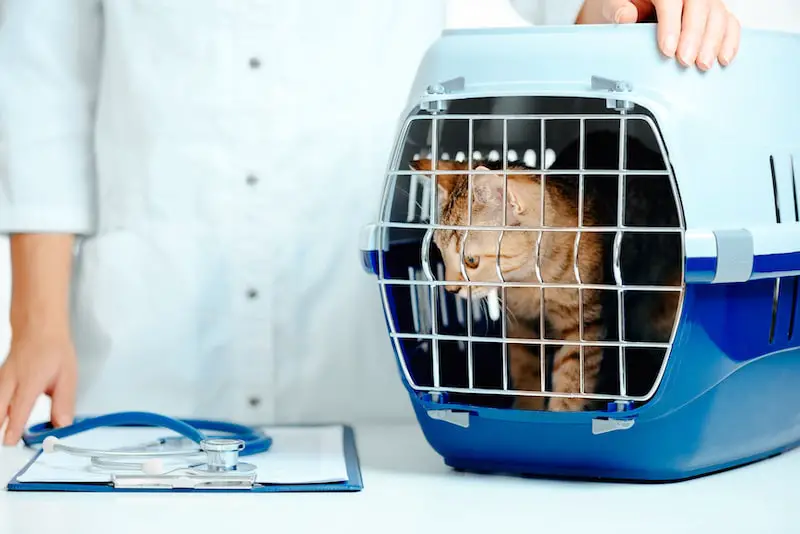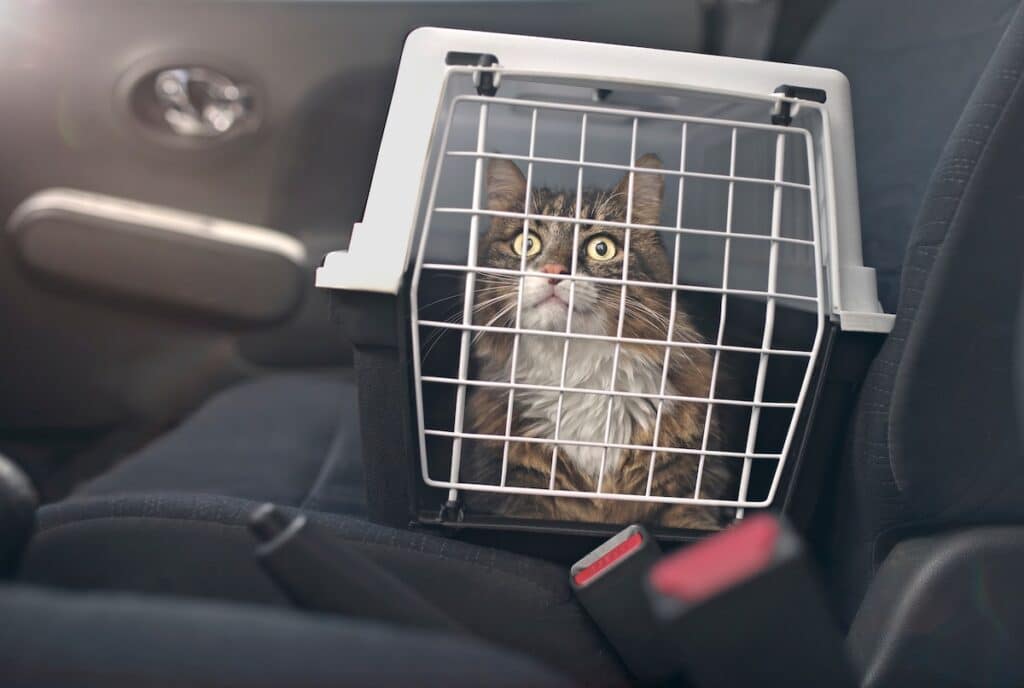Carrier training a cat involves getting your cat used to being in and around their carrier. Instead of associating their carrier with fear and negative experiences, they can have a positive view of their carrier. This makes visits to the vet and car rides much, much easier and less stressful for your cat. The steps in this article on how to carrier train a cat are proven and effective to put your cat at ease around carriers.
Introduce the Carrier
Set the carrier down somewhere the cat normally goes and just let your cat become used to it. This first step on how to carrier train a cat will improve your cat’s comfort level with the carrier enormously.
Over time your cat will approach the carrier and be at ease around it. If your cat refuses to go near the carrier, put treats or catnip nearby to encourage her to go near. Be sure to move the carrier to different locations every so often to get your cat used to the fact that it moves around.
After some time, the strange and scary factor of the carrier will wear off and your cat will become used to it.
Encourage Your Cat to Go Inside the Carrier
Leave the carrier door open and put a soft blanket or a bed inside to encourage your cat to go inside. Choose your cat’s favorite blanket so she already has something comforting and familiar in there. You might also consider putting catnip or cat treats inside so she associates it with positive things.
The goal here is to get your cat to think of the carrier as one of her normal cat beds or houses, and see it as a safe space. Using rewards like treats, praise and warmth will all create positive feelings about the carrier.

Close Your Cat Inside the Carrier
The next step to carrier training your cat is to close the door for small amounts of time. Only do this step after she has become comfortable going in and out of the carrier. Once again, create positive associations with being closed inside the carrier by giving plenty of treats, catnip and praise.
Over time increase the amount of time your cat spends in the carrier with the door closed. Start with one minute and end with the typical amount of time she’ll spend in the carrier during a car ride.
Carry Your Cat Around In the Carrier
Once your cat is comfortable in the carrier for up to 10 minutes, you can further her carrier training by carrying it around. Pick up the carrier from the bottom as opposed to the handle as it’ll swing less.
Carry her around the house and drop her off in a different location than she started in.
Take Your Cat For Car Rides
Finally, once your cat is used to being carried in the carrier, start taking her for some short car rides. Now you’re introducing the sounds and vibrations of the car, so she may initially become stressed out. Be sure to provide plenty of her favorite treats and keep familiar blankets inside the carrier. You may even want to try using cat pheromones as they have a calming effect on cats.
Carrier Training Frequency
One of the most important factors in training success is frequency. Your cat will only build on the security and positive feelings from the last training if she experiences it consistently. Try to implement these training steps for at least 10 minute each day. Remember, 10 minutes daily for one week is far more effective than 70 minutes of training one day per week.
When To Expect Results of Cat Carrier Training
There is no set time frame for when to expect results from cat carrier training, but with consistent efforts you should see improvements in a few weeks. Every cat is different in how quickly they respond to training. Factors such as age, personality, prior carrier experiences and breed all affect a cat’s ability to pick up on training. Contrary to common belief, though, most cats can be trained, and with patience and persistence you will be able to carrier train your cat over time.

Read More: How to Make Your Own Cat Treats














